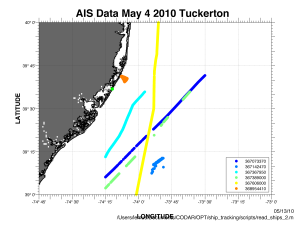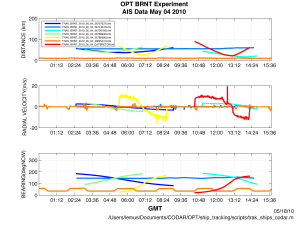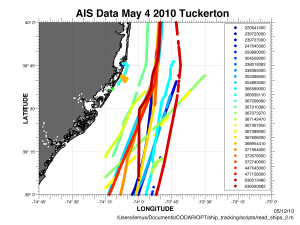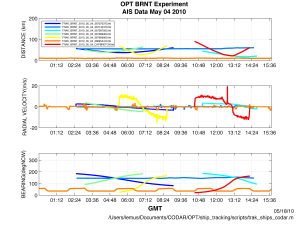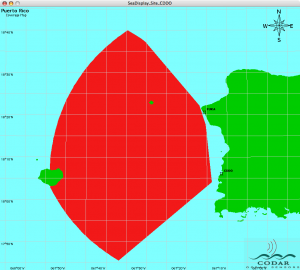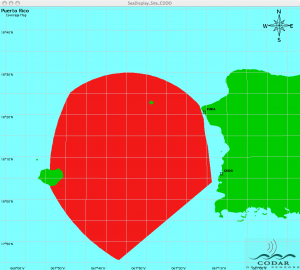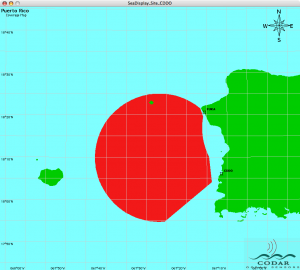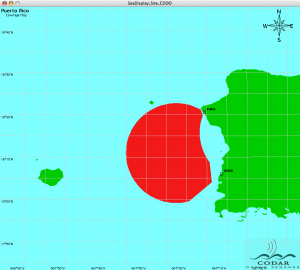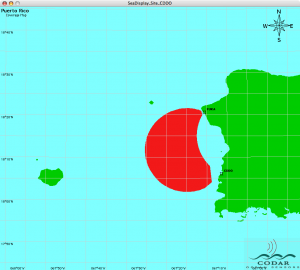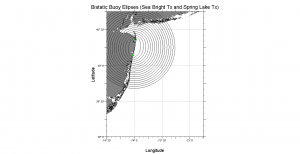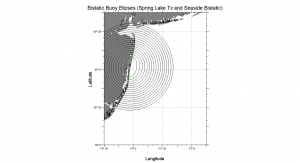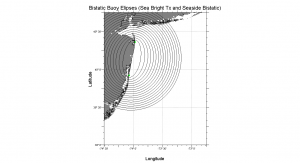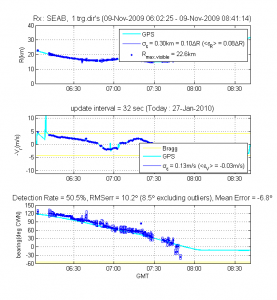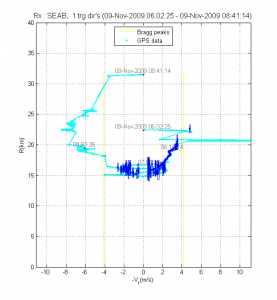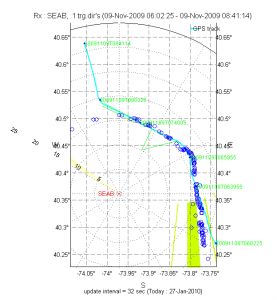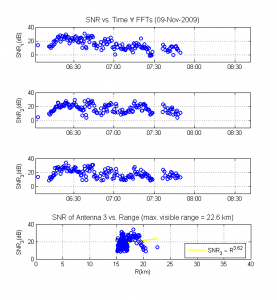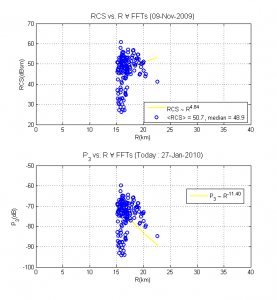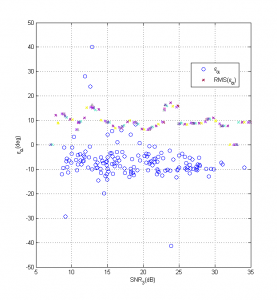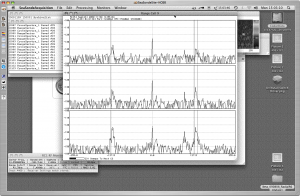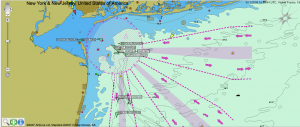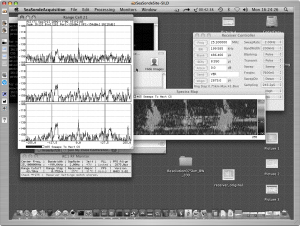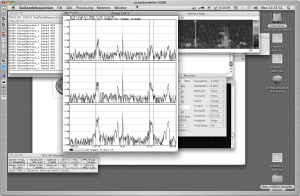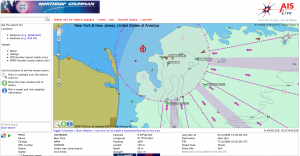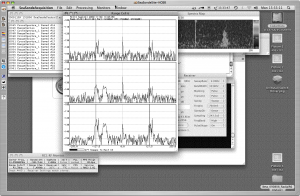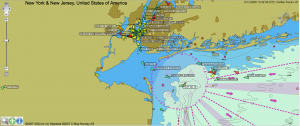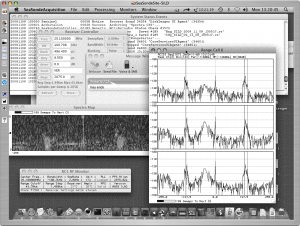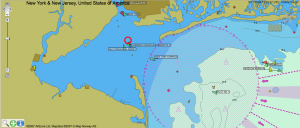-
LEAP Performance Report response
Posted on May 19th, 2010 No commentsHugh,
I decided to pick these vessels, because the Orange track has an interesting track, just moving outside of Barnegat. Sometimes ship detection notice some interesting boats just hanging out. The darker blue and green track I choose because there are some instances where the detection have some gaps. Both ships have similar radial velocity and distance, but different bearing. I am curious on how would the code resolve the differences, and see how it does with the gaps. The yellow track seems to be a straight line down south on the map, however, on the second graph, the vessel shows gradual change in distance to the radar as well as in bearing. Seems interesting on how the vessel moves. If you, see other vessels that need to be included please let me know.
-
LEAP Performance Report
Posted on May 19th, 2010 No commentsErick, how did you decide that you’ll plot 7 ships? Can you plot them all?
-
Stability Angles and Coverage at the FURA and CDDO sites
Posted on February 3rd, 2010 No commentsThe following are hypothetical coverages associated with the FURA and CDDO sites that are run by the University of Puerto Rico – Mayaguez. Each plot was made by changing the Stability Angles. As the stability angles are increased, the total coverage of the two sites decreases.
This picture is when the stability angles were set to 10.
Stability Angles: 20
Stability Angles: 30
Stability Angles: 40
Stability Angles: 50
-
Bistatic Ellipses between Sea Bright Tx and proposed sites in Seaside and Spring Lake
Posted on February 2nd, 2010 No commentsHere are some plots that I created that estimate bistatic ellipses between our Sea Bright Tx site and the proposed Spring Lake Tx and Seaside Bistatic sites.
Sea Bright Tx and Spring Lake Tx Ellipses
Proposed Spring Lake Tx and Seaside Bistatic Transmitter Ellipses
Sea Bright Tx and Seaside Bistatic Transmitter Ellipses
-
SEAB Results
Posted on January 27th, 2010 No commentsThe following figures were generated using data collected from the 13 Mhz Sea Bright (SEAB) site. This data was collected on November 9th, 2009.
For this experiment, the Los Angeles tanker ship was selected to be tracked. This plot contains three graphs. Each graph contains the ship’s GPS Tracks. The first graph is Range vs. time. The second is Radial Velocity vs. time. The third graph is bearing vs. time. Using the median method (FFT: 128, Threshold- 8 db) for detection, the highest detection rate for the Los Angeles was 50.5%. As you can see, the SEAB HF Radar site detected the Los Angeles fairly accurately. From the second plot, we can see that the Los Angeles traveled in between the Bragg peaks the entire time.
A Range (km) vs Radial velocity (m/s) graph depicting the GPS track of the Los Angeles and the detections of the ship from HF Radar. The ship was in between Bragg peaks almost the entire time.
A coordinate map depicting the GPS track of the Los Angeles. The detections done by the SEAB site are the blue circles laid over the track. As you can see, the GPS track and HF Radar Ship Detection match up quite well.
Signal-to-Noise ratio vs time plots: The first graph is the SNR from Loop 1, the second from Loop 2, and the third from the monopole. The fourth graph depicts the SNR from the monopole vs. range. The shipping lanes are approximately 10 and 20km from the New Jersey coastline. This is why there is no SNR from to 15km.
RCS vs. Range
Degrees vs SNR (Monopole).
-
AIS Data from Monday
Posted on November 11th, 2009 No commentsEric converted the AIS data from Monday November 9.
the ‘rLOVE_AIS’ contained 23,874 data points or 19% of the data
the ‘rSandyHookNOAA’ contained 4,031 data points or 3% of the data
the ‘rTuckerton’ contained 98,935 data points or 78% of the data
-
Detections towards end of Day 1
Posted on November 9th, 2009 No comments -
HOSR detection at 14:55
Posted on November 9th, 2009 No comments -
HOSR detection at 13:33 GMT
Posted on November 9th, 2009 No comments -
SILD detection at 13:20 GMT
Posted on November 9th, 2009 No comments



